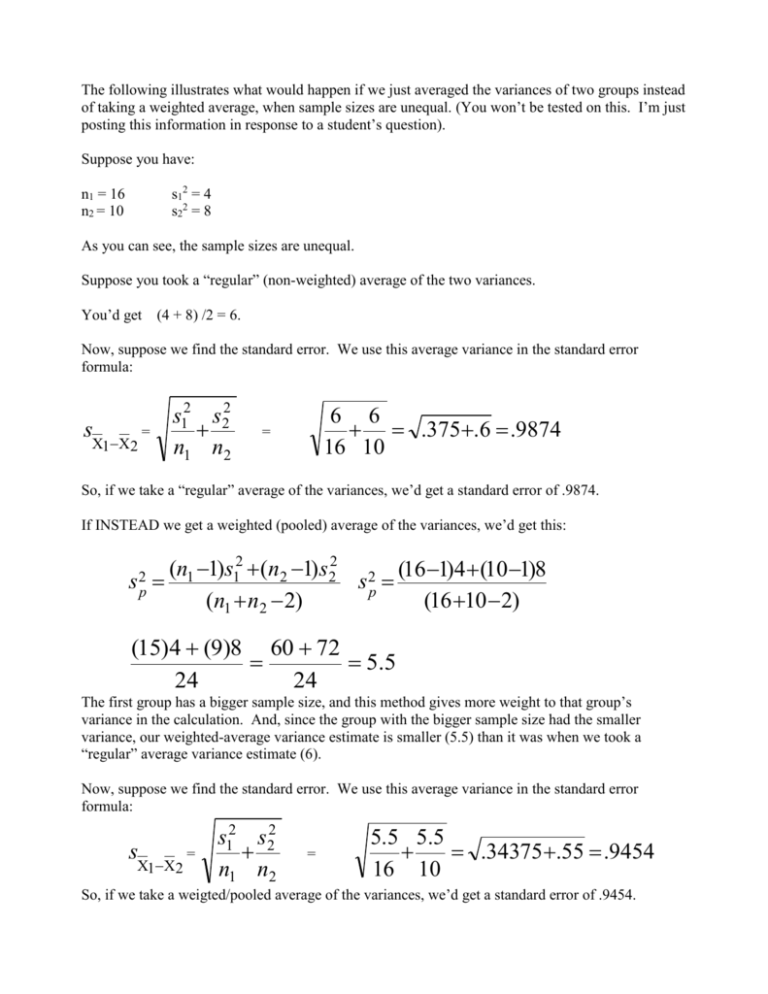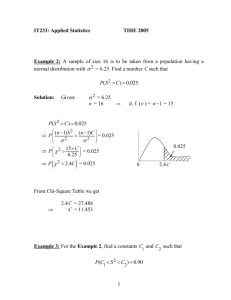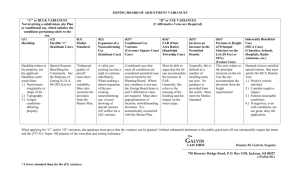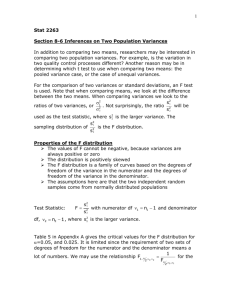Some additional information about pooling variances
advertisement

The following illustrates what would happen if we just averaged the variances of two groups instead of taking a weighted average, when sample sizes are unequal. (You won’t be tested on this. I’m just posting this information in response to a student’s question). Suppose you have: s1 2 = 4 s2 2 = 8 n1 = 16 n2 = 10 As you can see, the sample sizes are unequal. Suppose you took a “regular” (non-weighted) average of the two variances. You’d get (4 + 8) /2 = 6. Now, suppose we find the standard error. We use this average variance in the standard error formula: s X1X2 = s12 s22 n1 n2 6 6 .375.6 .9874 16 10 = So, if we take a “regular” average of the variances, we’d get a standard error of .9874. If INSTEAD we get a weighted (pooled) average of the variances, we’d get this: s 2p (n1 1)s12 (n2 1)s22 2 (16 1)4 (10 1)8 sp (n1 n2 2) (16 10 2) (15)4 (9)8 60 72 5.5 24 24 The first group has a bigger sample size, and this method gives more weight to that group’s variance in the calculation. And, since the group with the bigger sample size had the smaller variance, our weighted-average variance estimate is smaller (5.5) than it was when we took a “regular” average variance estimate (6). Now, suppose we find the standard error. We use this average variance in the standard error formula: s X1X2 = s12 s22 n1 n2 = 5.5 5.5 .34375.55 .9454 16 10 So, if we take a weigted/pooled average of the variances, we’d get a standard error of .9454. In general, as sample sizes get bigger, sample variances are better estimates of their population variances. So, using this pooled (weighted) procedure allows us to give more weight to the better variance estimates.











